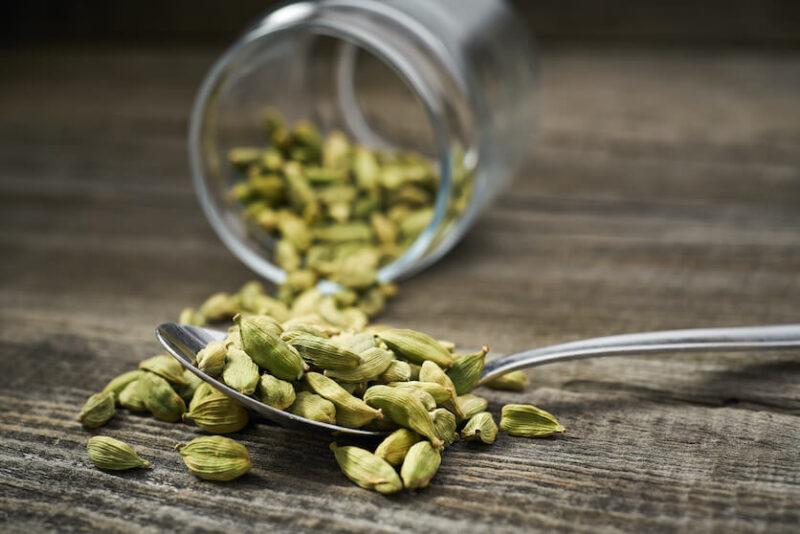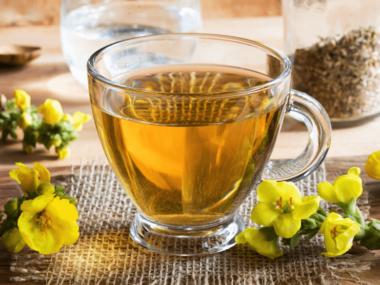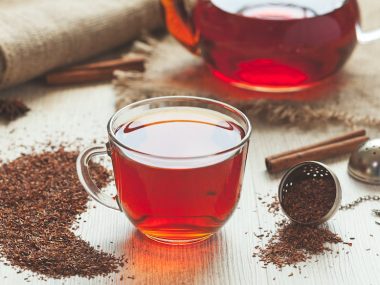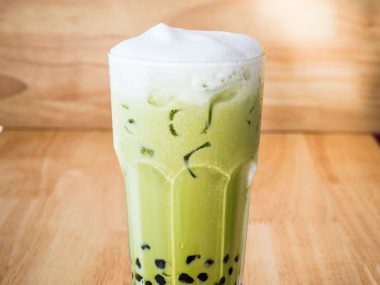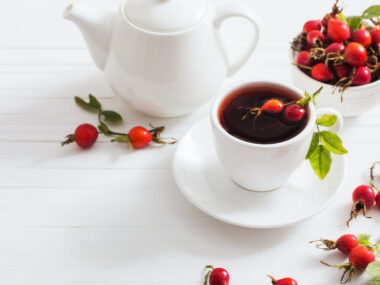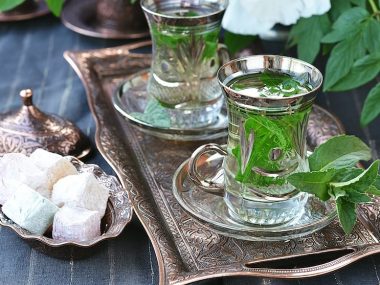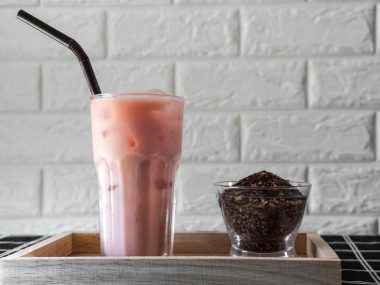“Carda-what?” Cardamom is one of those spices that commands attention because of its royal ranking in the spice world. Who knew that something dating back thousands of years would have a significant influence on some very familiar things we enjoy today like tea. Cardamom tea is a true novelty you odd to try!
Table of Contents
What Is Cardamom Tea?
Cardamom tea is typically either a black or green tea infused with cardamom. Some tisanes (herbal tea) have cardamom spice added to enhance the flavor. The most notable and familiar tea containing cardamom is masala chai tea.
What Is Cardamom?
There are two main types of cardamom spice, green and black, which are produced on two separate plants belonging to the ginger family. The seeded pods that form on these plants are harvested and used as spices (which we know as cardamom.)
Both have their own distinct flavor.
Green cardamom comes from a plant species called Elettaria cardamomum, which is found in the rainforests of southern India. Elettaria cardamomum (green cardamom) is well known as the “Queen of Spices.” This ancient plant is responsible for producing one of the world’s most expensive spices. Green cardamom is one of the main elements of masala chai tea and is used to produce cardamom essential oil. It’s also the cardamom spice sold in retail to flavor foods and beverages.
Black cardamom (also referred to as “large” cardamom) comes from a different plant species known as Amomum subulatum native to a small area in India known as “Sikkim State.” Black cardamom is typically used in savory dishes in the Middle East, India, and Asia. Also, it’s used in Ayurvedic medicine to treat various ailments and conditions.
A lesser well-known cardamom that’s rarely used is Ethiopian (Aframomum corrorima) which only is found in Ethiopia and West Africa.
The History Behind Cardamom
An interesting study (A Study on Cardamom Production and Exports – Queen of Spices) done on cardamom production and exports speaks on the historical significance cardamom has had in the economy and various cultures.
Cardamom (green) is a spice that’s been around for thousands of years. India has on record of this spice being mentioned in various ancient writings (as far back as the 2nd century BC) about how it was used as a ceremonial offering, medicine, and a way to flavor things.
During this time, the Greeks began the importation of Middle Eastern spices, which included cardamom. Various foods began to make their appearance in different cultures flavored with cardamom. Cardamom eventually made its way into Asian spice trading and into Asian cuisine.
Different Teas With Cardamom
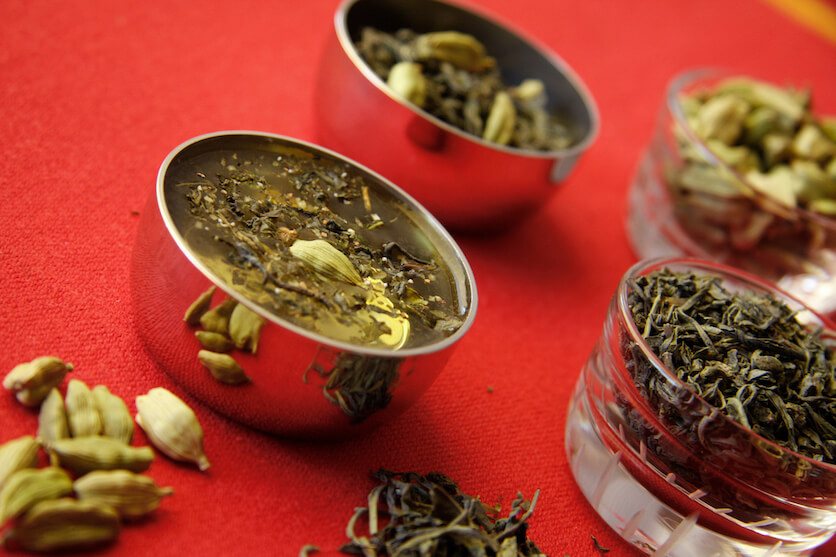
There are various different teas that contain cardamom. Because cardamom is a spice used to flavor and enhance, it’s not used as a single ingredient for tea but rather is added to tea.
You may have seen tea marketed as “Cardamom Tea,” but that tea is usually a black tea with cardamom-infused or added. Why they don’t market it as “Cardamom Black Tea” is something many tea drinkers ponder.
Cardamom is synonymous with Masala Chai tea. Along with a few other spices, all are married into the luscious iconic Indian beverage that westerners know as simply “chai tea.”
Numerous tisanes (herbal teas) contain cardamom such as ginger-cardamom, cinnamon-cardamom, turmeric-black pepper-cardamom, and an immune zinger with turmeric-orange-lemon-anise-ginger-cardamom.
What Does Cardamom Tea Taste Like?
Green cardamom (which is used for tea) has been said to have a multitude of flavors that include mint, citrus (lemon,) pungent, spicy (warm,) pepper, cool like eucalyptus, floral, and sweet.
Black cardamom (which is used for flavoring savory dishes), on the other hand, has an overpowering menthol element with a smoky taste. Perhaps this is why you won’t find black cardamom in a beverage, as it could very well result in a rather undesirable flavor.
How Much Caffeine Is In Cardamom Tea?
Cardamom in and of itself or a tisane it is added to does not contain caffeine. However, the black or green tea that cardamom is added to does contain caffeine. A six-ounce cup of green or black tea averages about 40-50 mg of caffeine.
The FDA recommends that a daily intake of caffeine should not exceed 400 mg. With that in mind, tea drinkers can safely enjoy about 4-6 (six-ounce) cups of green or black tea a day. It’s always best to consult with your healthcare provider on whether tea is safe for you to consume, especially if you are on medications or have any medical conditions.
Does Cardamom Tea Help You Sleep?
There is no scientific data stating that cardamom has any sedating effect or benefits for those with insomnia. When consuming a black or green-based tea with cardamom-infused or added, the caffeine in those teas will have the opposite effect by causing difficulty getting to sleep if consumed too close to bedtime. Contrastly, if a tisane containing cardamom is consumed near bedtime and it happens to also contain sedating herbs, that tisane may help in getting to sleep.
Is It Okay To Drink Cardamom Tea Every Day?
We don’t have the medical expertise to advise or make recommendations regarding the daily consumption of cardamom tea or tisane. We can provide you with evidence-based data to help you make that personal choice.
There is no supporting data indicating any dangers in consuming cardamom. The FDA lists cardamom as a “Substances Generally Recognized As Safe.”
If a cardamom tea has a black or green tea base, moderation is recommended because of the intake of caffeine. Likewise, if a cardamom-containing tisane has herbs that may have adverse side effects or interactions with certain medications, consuming that cardamom tisane may not be ideal on a daily basis.
When Should I Drink Cardamom Tea?
Cardamom tea with a green or black tea base contains caffeine. Caffeinated teas are best consumed during the day. However, if enjoyed in the evening, drinkers may find themselves having difficulty getting to sleep.
Cardamom Tea Benefits
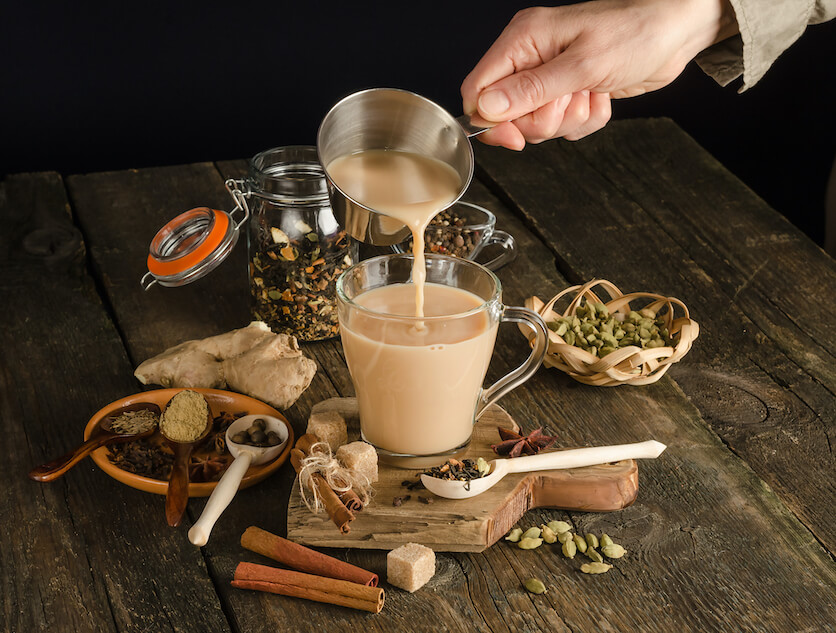
Cogent Medicine published a research article noting how cardamom essential oil derived from Elettaria cardamomum is beneficial for the digestive system. It goes on to state that cardamom is also an antimicrobial, antioxidant, and anti-inflammatory.
Benefits for Oral Health
The Anaerobe Journal published a research article (Antibacterial and Anti-inflammatory Activities of Cardamom (Elettaria cardamomum) Extracts: Potential Therapeutic Benefits for Periodontal Infections) on how cardamom exerted periodontal effects. This spice’s antibacterial ability inhibited numerous oral bacteria, causing a disruption in activity and also prevented oral bacterial biofilm from forming.
Provides Anti-Inflammatory Benefits
The Journal of Medicinal Food published the results of a study on how cardamom (combined with black pepper) changed and decreased the production of biological nitric oxide responsible for inflammation. Additionally, the study goes on to note that cardamom and black pepper promote immune health.
Cardamom Has Antibacterial Properties
A collective article (Natural Products Chemistry) was published in the Molecules Journal, and included in this article was an independent study (Chemical and Biological Evaluation of Essential Oils From Cardamom Species.) In this independent study, researchers examined how cardamom essential oil acted on bacterial and fungal growth. Cardamom was found to inhibit bacterial cell communication and the growth of bacteria and fungus.
How To Make Cardamom Tea
Cardamom can be enjoyed in various teas such as green or black. Cardamom adds layer upon layer of flavors to a good quality Assam, Hojicha, Darjeeling, Ceylon, or herbal tea. Cardamom tea can be made with whole pods of ground powder. If you’re curious about how to make cardamom tea with ground cardamom, it’s as easy as substituting ground cardamom in place of pods. We have a luscious recipe that is easy to make.
Cardamom Tea Recipe
Ingredients
- 2 cups of water
- 1 green cardamom pod (or ½ teaspoon of ground cardamom)
- 1 ½ teaspoons of loose leaf tea (black or green)
- ¼ teaspoon of ground cinnamon
- ¼ teaspoon of ground ginger
- ½ teaspoon of local raw honey
- ½ teaspoon of pure vanilla
Directions
- Bring the water to a boil (if using green tea, the water should only reach a maximum of 185 degrees (F.)
- Place the loose leaf tea and cardamom pod in a tea infuser. If using ground cardamom, proceed to the next step.
- Drop the tea infuser into the hot water.
- Add the vanilla, ground cinnamon, ginger (and cardamom if using ground cardamom) to the hot water.
- Cover and allow to steep for 5 minutes.
- Remove the tea infuser.
- Stir the tea mixture.
- Pour into a teacup.
- Add the honey, and enjoy!
Cardamom Is A Keeper
Cardamom tea is something well worth enjoying. Explore the various ways to add flavor dimension to your tea by adding complimenting spices such as cinnamon, ginger, nutmeg, and allspice.
